All That Surrounds Us

Julian Alper never imagined that he would find himself among Israel’s top nature photographers

Photos: Julian Alper
Sometimes all it takes is a morning at the Kinneret, a trip to the falls of Ein Gedi, or the sudden appearance of the sun on a winter day, to remind us that Eretz Yisrael is a land of unique beauty. Pick up your head, and you’ll see tens of thousands of migrating pelicans, turn to the side and you might catch a fleeing ibex, look down and there might be a brave chameleon trying to ward you off
J
ulian and Miriam Alper of Manchester, England never imagined their new home would be in Teveria, or that Julian, a hi-tech consultant, would find himself among Israel’s top nature photographers. But as their children grew and eventually went off to Israel to study, and then live, the Alpers prudently purchased a vacation apartment in Teveria.
“It made financial sense to forgo the hotels and instead have a permanent place to stay during our visits,” says Julian, “so when we made aliyah in 2014, we came straight here, thinking we’d stay temporarily until we’d find something more central.” Nine years later, they’re still there, taking full advantage of living up north — and mostly, that means taking advantage of the breathtaking scenery: They can see the Kinneret and Mount Hermon from their porch.
Miriam was a first and second grade teacher back in England and now teaches English in the local Ulpanit. She’s also a professional-level musician, proficient in an assortment of instruments but favoring piano and flute.
Julian worked long hours as a consultant for hi-tech industries for many years, although now he’s down to just several hours a week, which frees him up for other pursuits.
“It’s wonderful,” he shares. “It leaves me the opportunity to do things I was unable to when I was working full time and traveling for work. Aside from photography, I can now learn every day — and I don’t take anything for granted anymore. I learned in Ohr Somayach way back when, and it turns out that my chavrusa in Teveria and I learned together back then as well.
Julian has been tinkering with a camera for years, and is basically a self-taught shutterbug.
“My father gave me a camera and taught me some basics,” says Julian. “He was a dentist and had a darkroom for developing the X-rays. To me, it seemed like magic, and that’s what got me started.”
Although some photographers spend years in courses perfecting their technique, Julian just shrugs. “Well, I guess I’m blessed with a steady hand and an eye for composition. Once my time freed up, I started taking more photos, and for some reason my friends and family liked them — they were pushing me to do an exhibit, although at the time, I didn’t feel ready for that. But lately I’ve felt a desire to share my pictures with the world.”
Julian has become a popular nature blogger for the Times of Israel, and the Jerusalem Post has published around two dozen of his photos. But for now, at least, it’s just a hobby. “I’m not looking for compensation at this point in my life,” he says, noting how his photography skills have improved tremendously since moving to Israel. “The land overflows with inspiration, and I find myself photographing constantly.”
Julian takes out a binder and flips it open. His photos are simple yet complex in their clarity. So many birds! It looks like they’re about to soar off the page.
“Israel is the crossroads for every bird flying out of Europe for the winter and then back to Europe come spring. Tens of thousands of pelicans, cranes, storks, flamingoes, and birds of prey fly over various places around the country.” Tens of thousands of cranes migrate through the Hula Valley, for example, and there’s a lake near Netanya where the pelicans congregate.
Another view from their balcony is the Arbel National Park, reputed to be the final resting place of Yaakov Avinu’s sons Reuven and Shimon and his daughter Dinah, and was also the home of Nitai Ha’Arbeli, the head of the Sanhedrin in the first century BCE. It’s said to be the place where Mashiach will first arrive, where the “dawn will break,” just like the light that filters through to the dark valley between the two famed sister cliffs that make up the Arbel.
“There is one species that is unique to the Arbel,” Julian says. “It might not be as exciting as wolves or eagles, but the Cristataria is a small snail that can only be found at the Arbel and nowhere else in the world. Just after it rains, you can see these snails on the rocks near the parking lot, where they emerge from the crevices to feast on the algae that’s on the rock faces.”
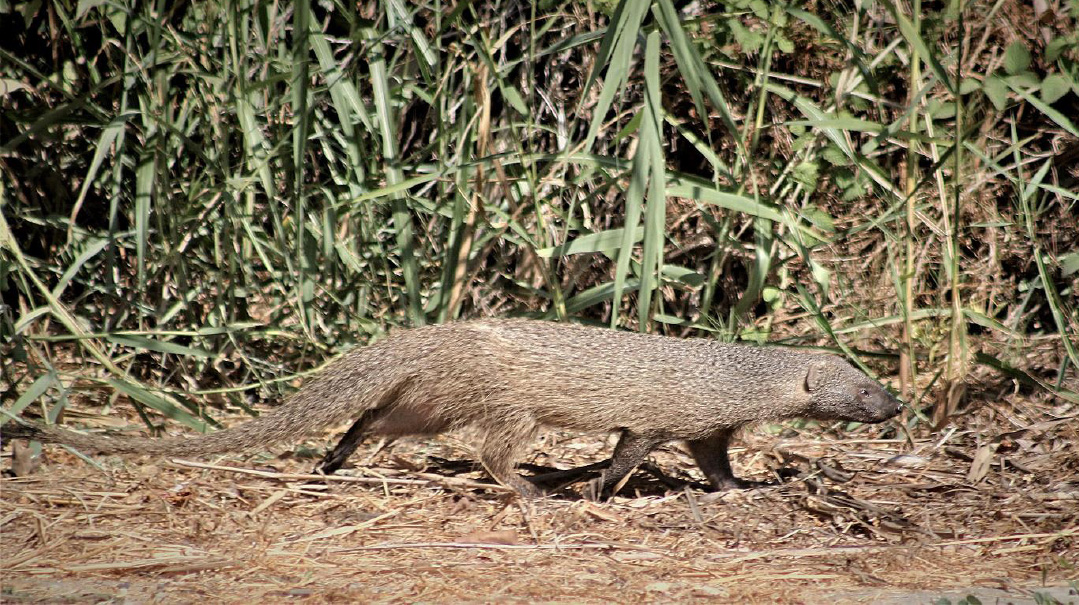
Hen Hunters
“Walking back from shul one morning soon after we first arrived in Teveria, an animal walked across my path. It looked a bit like a stretch cat, with a long body and short legs, but I had never seen an animal like this before,” Julian relates. “Sometime later, a friend in Teveria told us that she had kept hens in her backyard, but they had become prey for mongooses, who take the eggs and sometimes kill the hens too. Before long, she’d lost all her hens.”
Mongooses are fierce predators who will happily eat other birds, fish, lizards, rodents, insects and even snakes. Eight times out of ten, in a standoff with a cobra, the mongoose will come out on top and will then feast on the cobra.
“I was curious to know how they could eat cobra, including the deadly venom, without poisoning themselves,” Julian says. “Apparently, they’re naturally resistant to it. I was also puzzled to know how they coped with being covered with all that fur, living in the hot climate of Israel and being a daytime creature. I learned that the fur actually insulates the body, protecting it from the heat of an Israeli summer.”
Mongooses might be fierce predators, but as soon as they see people, they scoot off, making it difficult to get a good photo. “But on a recent visit to the Hula Nature Reserve not far from Tzfas, we watched a pair of mongooses walk out of the shrubs by a footpath,” Julian says. “They didn’t see us, and I had a couple of seconds to point my camera, focus, and capture this image of one of them, before they spotted us and beat a hasty retreat.”
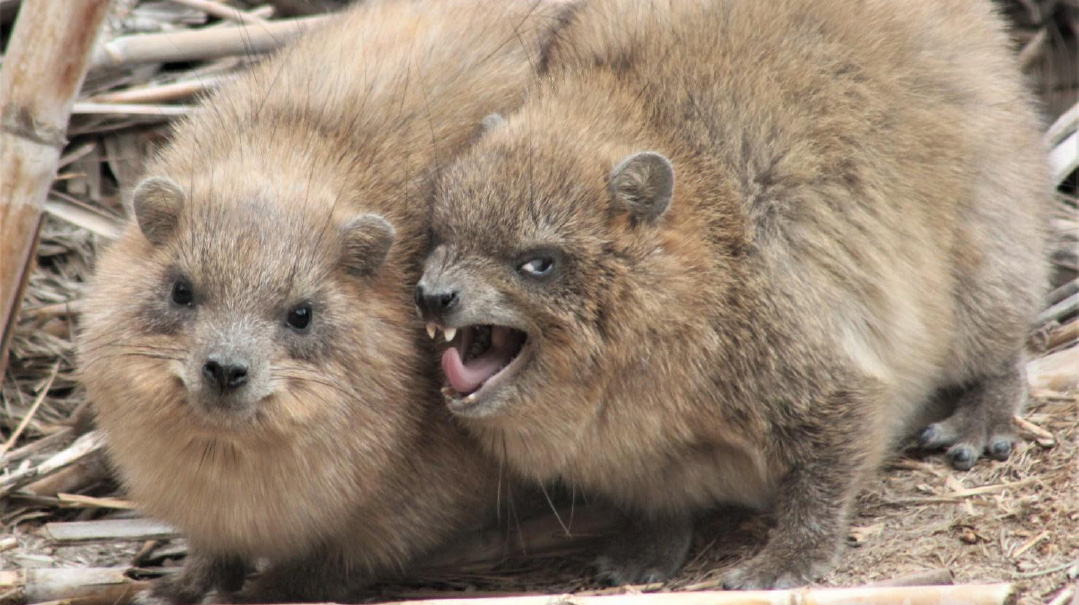
Almost an Elephant
“On my first visit to the Arbel nature reserve quite some years ago, I saw what looked like a small Australian koala bear, but clearly that wouldn’t have been possible unless it had been a remarkable swimmer or had escaped from a zoo. I subsequently discovered that it was a Syrian rock hyrax, a shafan, which is one of the most intriguing animals that reside in Israel,” Julian explains.
It’s a small animal, perhaps about 18 inches long, but its gestation period is six or seven months. Compare this to a fox which is much bigger than the hyrax and produces its young in just 50 to 60 days, or to the rabbit, which is only a little smaller than the hyrax yet has a gestation period of about a month. Curious though this is, it’s not the most fascinating aspect of a hyrax. What is almost unbelievable is that the hyrax’s nearest family member in the animal kingdom is the elephant.
In Borchi Nafshi (Tehillim 194:18), Dovid Hamelech wrote that the rocks are a shelter for the hyraxes. Well, the Arbel seems a perfect location then, as hyraxes have plenty of opportunity to dart for cover among the many rocks along the cliff edge. Julian photographed this pair of hyraxes at Ein Gedi, another great place for hyraxes to hide among the rocks.
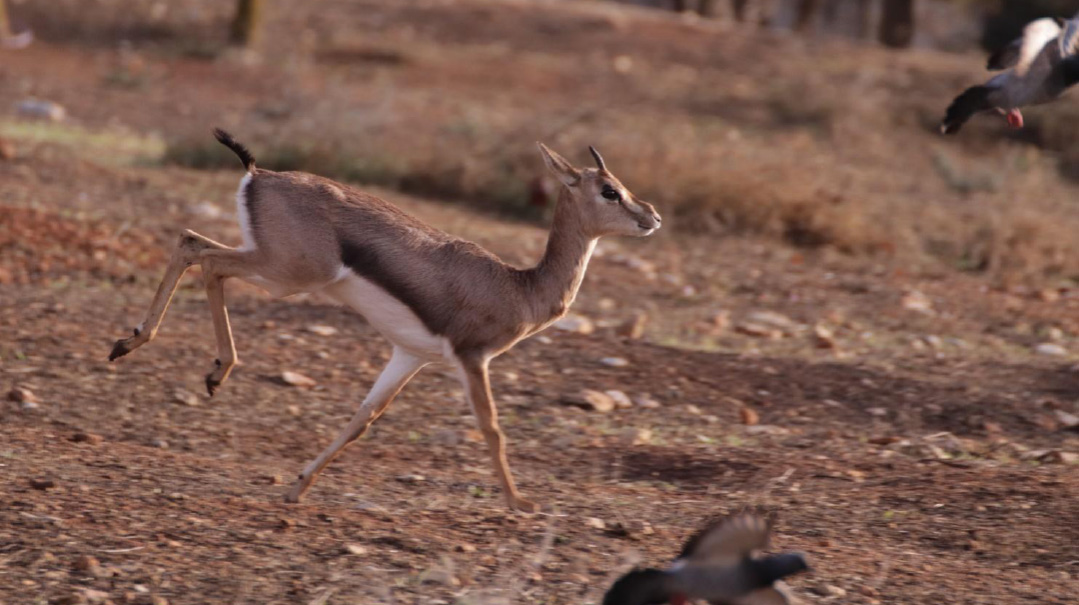
Swift Like a Deer
On the southern edge of Jerusalem, mountain gazelles — tzvi heharim — can be found grazing in Gazelle Valley, where they lived naturally until the 1990s when the city’s expansion stretched to the southern municipal border. Each year, some of these gazelles are relocated to other areas of the country, including the Golan and Ramat Hanadiv near Zichron Yaakov, in order to live in the wild. The total world population of this gazelle is less than 5,000, most of which are in Israel, so the species is protected.
“The park wardens I spoke with noted that on cold winter mornings, the gazelles gallop around the park to keep warm. On a recent visit, I was lucky enough to see this gazelle doing its morning gallop, but of course they move rather swiftly, which makes it quite a challenge to photograph them,” Julian relates. “I ‘panned’ the camera, following the gazelle, hoping to ‘freeze’ its motion, while it was doing its best to warm up. I allowed the lens to be open for less than 1/600 of a second.”

With Flying Colors
“Not long ago,” Julian reports, “we were on a scenic forest drive near the Golani Junction in the north of Israel, when we saw on the road ahead a crow and a chameleon having an altercation. The crow was looking very menacing, hopping to this side and that, while the chameleon steadily rocked itself, open-mouthed. The chameleon lacks a defense arsenal — it doesn’t have sharp teeth or claws or a hard shell to fend off predators — and it doesn’t move very quickly to escape danger. So, it tries to look threatening, rocking its body back and forth, with its mouth wide open.
“We stopped the car, the crow scarpered, and I grabbed my camera and approached the chameleon. I had to get the camera right down to the ground to look straight at the chameleon, which still seemed shell-shocked.
“When we returned home, I started thinking about the most well-known characteristic of the chameleon: If you’re thinking it’s the chameleon’s ability to change color so that it can blend into its surroundings by camouflaging itself, you’re thinking the way I thought. But that’s not the case. The chameleon’s color change is usually associated with mood swings. Just as we’ll turn white if we’re frightened or red if we’re embarrassed, so too the chameleon’s color can indicate how it’s feeling. If it’s happily walking along in the sun, it will be a bright green color. If it’s frightened, its complexion turns a dark shade; if it’s feeling aggressive or angry it might be reddish, and if it has a bout of depression, it could be brown. I guess you could say it wears its heart on its sleeve.”
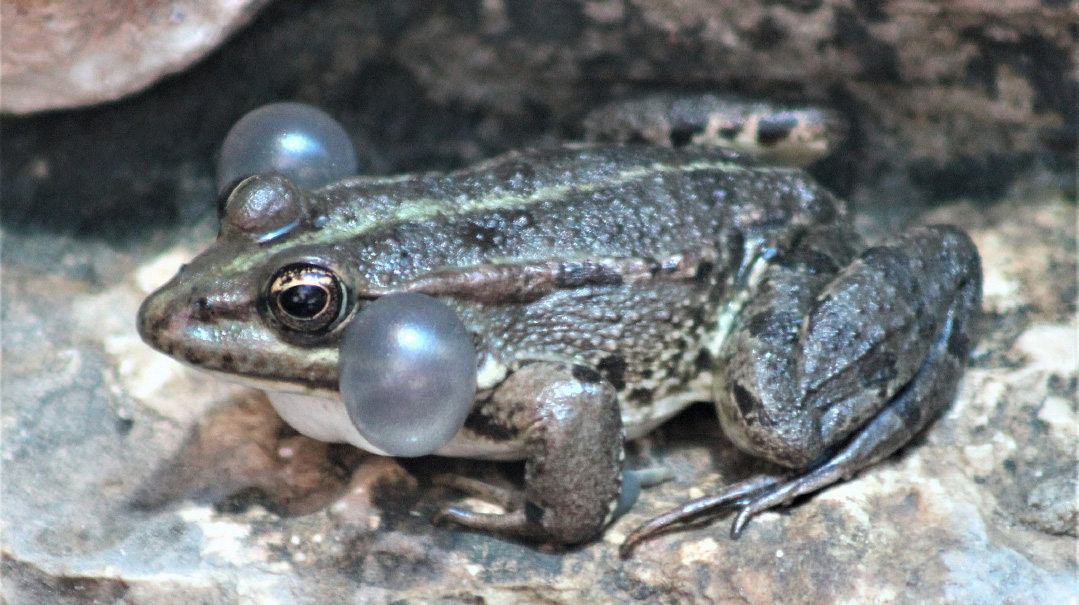
Voice Over
Kibbutz Lavi is just a 15-minute drive from the Alper home, and one of their favorite spots is a pond on the perimeter walking trail, where there are usually frogs to see.
“I waited for 20 minutes or so to let the frogs get used to me being there, and then I raised my camera to take photographs,” Julian says. “One of the frogs was croaking, and I noticed that as it croaked, little bubbles inflated and deflated at the side of its face. I’d heard frogs croak many times before but never realized that if a frog calls out, its croaks might be heard just a meter or two away, but by inflating its bubbles, the sound resonates and can be heard up to hundreds of meters away, thus enabling the female frogs to locate the males. These bubbles are known as vocal sacs, and there’s even a Wikipedia article on ‘Vocal Sac’ to which I submitted three of my photos: the frog with vocal sacs fully inflated, partially inflated, and with vocal sacs deflated.”
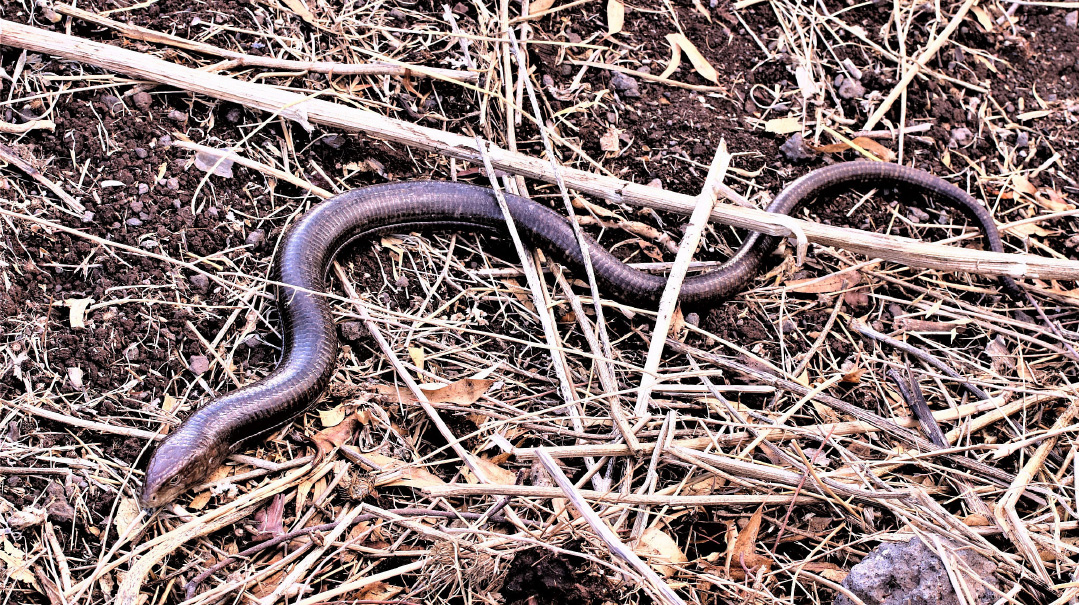
Sneaky Like a Snake
Starting where Teveria ends and continuing southward for much of the length of the Kinneret is the Switzerland Forest, one of Julian and Miriam’s favorite haunts. From its name one might infer that the scenery resembles Swiss mountain forests with their magnificent views, but the forest actually got its name from the contribution made by the Swiss Jewish Community to fund its landscaping.
During rainy seasons, there have been many instances of mudslides down the mountains, the worst of which was in 1934, which caused the deaths of 25 people in Teveria. Planting the mountain slopes with trees and bushes to prevent erosion has ensured that no such disasters have happened since.
“Several times a week, we walk in the forest, and one day we encountered this four-foot long creature,” Julian remembers. “I’m not sure why we weren’t afraid to approach, but for some reason it didn’t seem dangerous. I was just about two meters away when I took this photo. Thinking about it afterward, I decided that I was really very foolish — it could have been deadly. What sort of snake was this? Was it really poisonous? Actually, this snake-like creature is not actually a snake, it’s a European glass lizard, or a legless lizard. It’s not dangerous but cunningly looks like a snake to ward off would-be predators. How sneaky to be so snaky.”
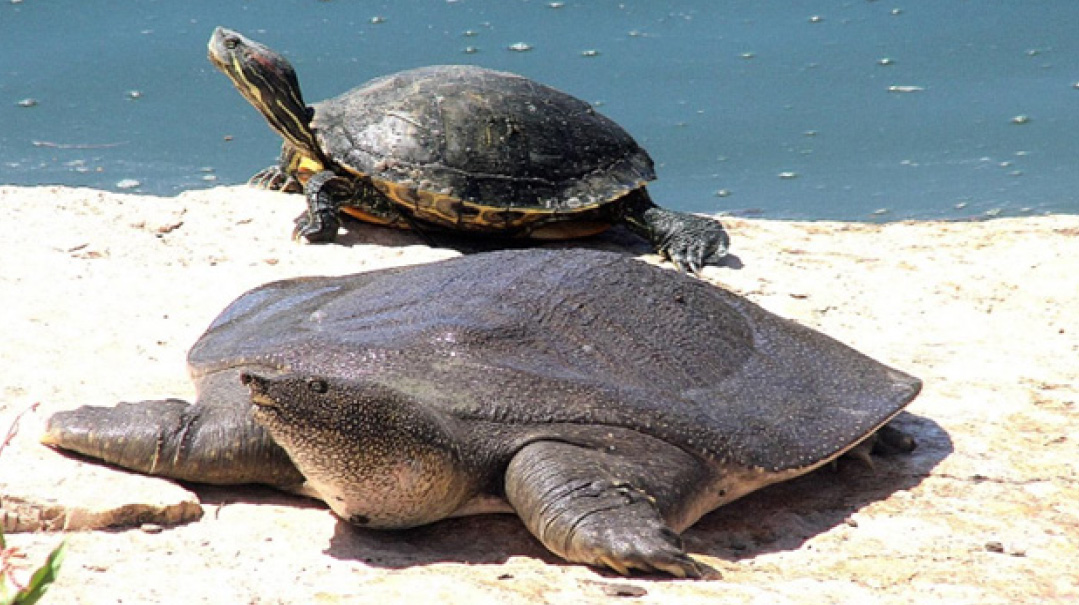
Got Your Back
“Sometimes, on our way to Netanya to see our children and grandchildren, we visit Nahal Alexander,” Julian relates. “We specifically go there to see the softback turtles. We see them swimming in the river and sometimes basking in the sun on the riverbank. These turtles don’t have the hard-shell protection of tortoises and other turtles, and are also much bigger — they can be three feet long and weigh over a hundred pounds, making them hard for birds of prey to pick up and take home for dinner.”

Diving for Dinner
“Living close to the Kinneret, we’re often able to see the kingfisher (shaldag), known for its long beak as it swoops down to the water and fishes out its prey,” Julian relates. But he explains that the common kingfisher, which is as majestic as its name implies, is not nearly as common as its cousins, the white-throated kingfisher and the black-and-white pied kingfisher. These two are significantly bigger than the common kingfisher and so are easier to photograph.
“The common kingfisher, though, is the real gem,” he says. “It has a vivid blue back and head and pinky-orange breast and is a sight to behold in flight. It’s a small bird, barely bigger than a sparrow, and since each day it needs to eat about sixty percent of its body weight, it’s constantly on the lookout for a nice fish for breakfast, lunch, and supper.”

Wings to Fly
What’s Israel’s most beautiful butterfly? Julian and Miriam agree: the swallowtail. “I’ve always found it quite difficult to photograph butterflies,” Julian admits. “One problem is that they don’t stay still for very long. Another is that they often settle with their wings upwards, in sort of camouflage-mode. Butterflies open their wings to absorb heat from the sun, as they can’t fly until their temperature reaches about 30 degrees centigrade. So early in the morning, while they’re still trying to warm up, butterflies are more likely to bask in the sun, making it a good time to photograph them. This photo was taken early in the morning last summer at Mount Arbel. I tried several times to get the shot I wanted, but the butterfly didn’t settle for long. After many attempts I found it momentarily still. It was well worth all the effort — the BBC selected it as one of the pictures on their summer theme.”
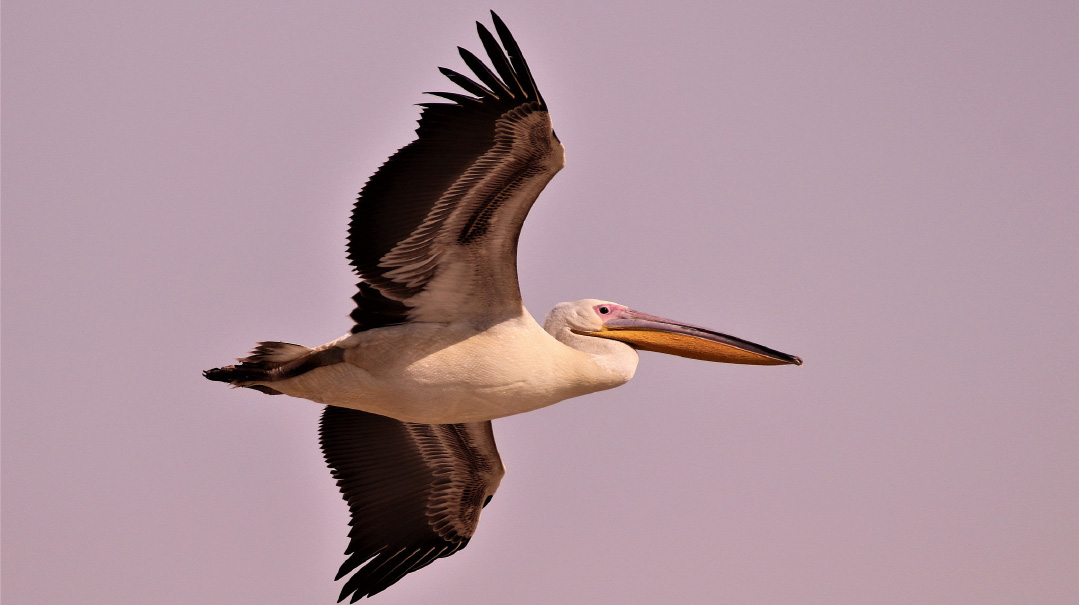
Fish for Supper Again
Funny old bird is the pelican — its beak can hold three gallons (11 liters) of water, which is three times as much as the capacity of its stomach. The Hula Valley and the Viker Lookout near Netanya are great places to see pelicans.
Pelican migration takes place during spring and autumn (March to April, and October to November). Most years, 40,000 or so pelicans fly over Israel, looking for shelter and food. They’re particularly fond of fish so are attracted to Israel’s lakes.
These are the largest birds that fly across Israel. They weigh about 20 pounds and have a wingspan of up to 10 feet. In the autumn, they travel from Europe to Africa where the winter climate is somewhat warmer, and in spring they travel in the opposite direction. They prefer to fly over land rather than over the sea — it’s safer for them —so Israel is on the flight path.
“The hungry pelicans consume huge quantities of fish, which doesn’t make them popular with Israeli fishermen,” Julian says. “So, tons of second-grade live fish are deposited in designated lakes to feed the pelicans and keep them away from Israel’s best fishing locations. The pelicans are happy, and the fishermen are happy too, although I suspect the fish aren’t that thrilled about this arrangement.”

Comfortable on My Car
The Nubian ibex (in Hebrew, yael), a wild goat, has an estimated total world population of just over 4,000. In Israel, we find them in desert regions, including Ein Gedi and the Ramon Crater. On a recent trip to Ein Gedi, the Alpers encountered them, both in the nature reserve and in the adjacent kibbutz’s huge botanical gardens, where they roam free.
“One time, returning to the parking lot after hiking through Nachal David, we noticed from afar that a female ibex had made herself at home on our car roof,” Julian recalls. “I sprinted like a galloping gazelle to ensure I wouldn’t miss what would perhaps be a once in a lifetime opportunity. I took one or two photographs and then noticed a bird, a Tristram’s grackle (a sort of starling) fly onto the car. I waited patiently and was rewarded with this shot of the bird perched underneath the ibex, both of them just waiting to be photographed.”
Fright or Flight
During the autumn or spring, you might see flocks of majestic cranes flying high above you in a vee formation. You don’t even need to look up to tell when they fly over. They honk to each other — moans and hisses as well as snoring sounds — telling each other which way to head, and whooping to tell everyone that they’re passing by. On their long flight, they stop for a rest in the Hula Valley, and you can see them, tens of thousands at a time, at Agamon Hahula.
“On one recent trip, I positioned myself at the edge of the field where they were gathering and started photographing them, in small groups and also in large groups, in flight and also massed on the ground,” Julian says. “It was my good luck that for some reason, one of them took fright and took flight — and all the others followed suit. It was a miracle that they didn’t collide with each other. Birds are programmed to adjust their flight instantaneously by observing those immediately next to them.”
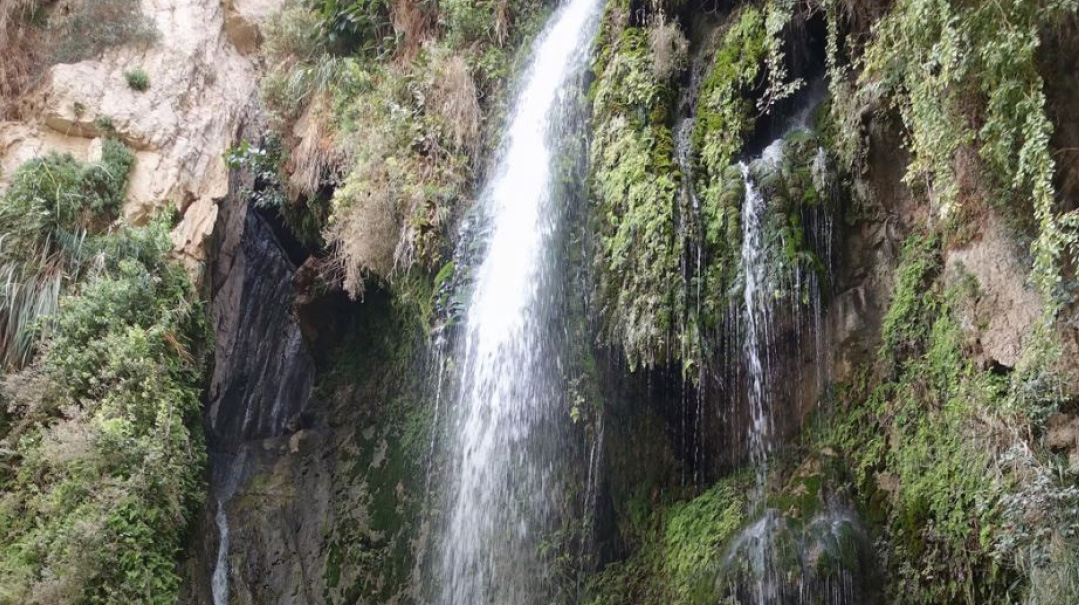
The Sound of Music
Listening to Julian explain each of his photos is an experience in and of itself. What comes through so clearly in each photo is the photographer’s awe over the detail of Hashem’s creations.
“Miriam and I actually have been working on a project together,” Julian says, flipping open his laptop. Julian clicks on a link that says “Ein Gedi photos.” Underneath the title are the words, “Music Composed by Miriam Alper.”
I watch a short slideshow consisting of the most stunning photos of Ein Gedi Nature Reserve, elevated even more so by the music playing in the background — a majestic triumphal march laced with longing and hope. As I watch a waterfall frozen on the screen, droplets spraying every which way, the music crashes into the spring below. As a bird takes flight, the music soars, dipping and rising.
“How did you choose the perfect photos for your composition?” I ask.
She looks confused. “Oh, no. I composed the music after looking at Julian’s photos. Not the other way around.”
(Originally featured in Mishpacha, Issue 951)
Oops! We could not locate your form.







